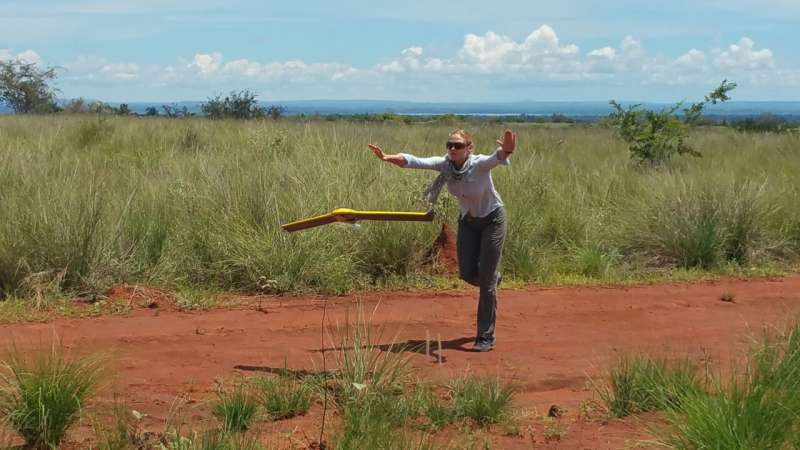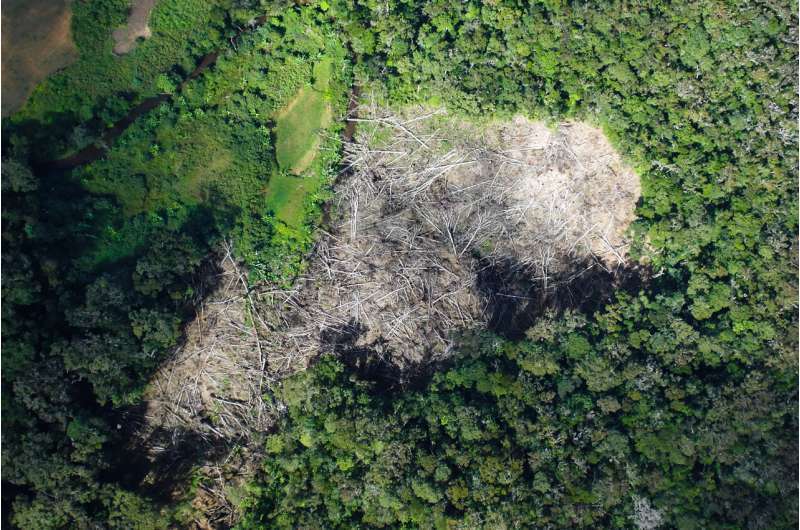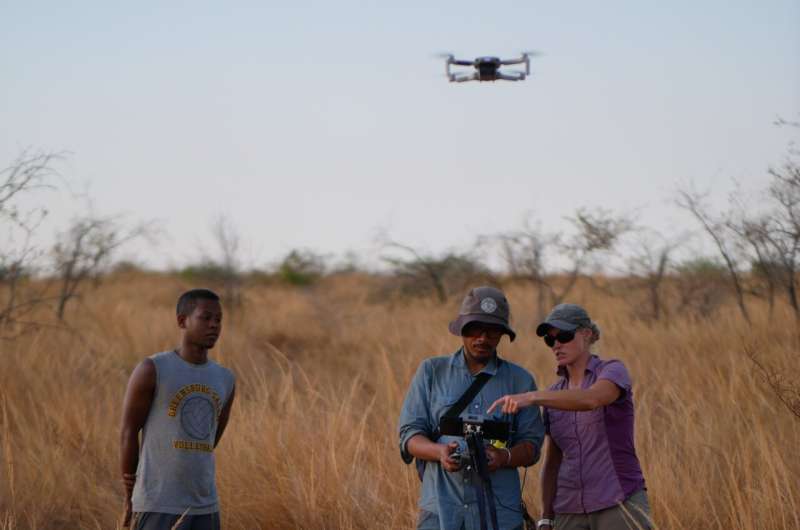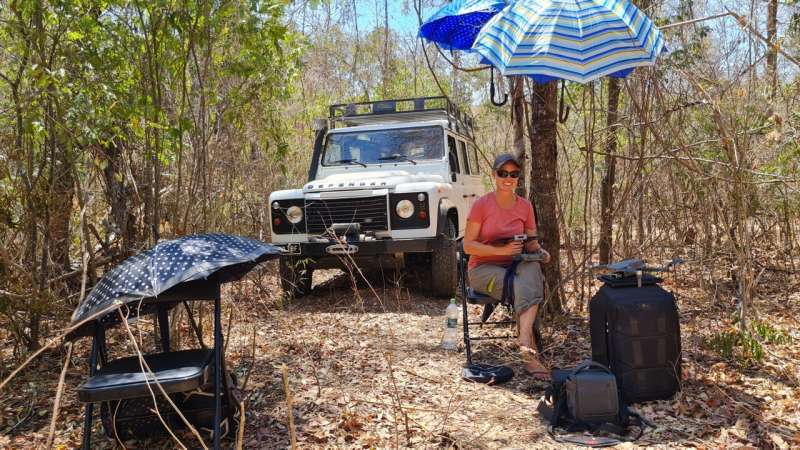This article has been reviewed according to Science X's editorial process and policies. Editors have highlighted the following attributes while ensuring the content's credibility:
fact-checked
peer-reviewed publication
trusted source
proofread
Drone flights and 3D scans: Scientist uses cutting-edge tech to protect Madagascar's vulnerable forests

In a new study published today in the journal Plants, People, Planet, scientist Jenny Williams from the Royal Botanic Gardens, Kew, highlights how the use of drones can help curb the loss of Madagascar's biodiverse forests through illegal deforestation.
The study, which focused on the Ambohimahamasina humid forest in the southeast of the island, arises from a series of 19 ultra-high-definition drone surveys undertaken by the study's author, senior spatial analyst, Williams.
The resulting data and 3D base maps have led to the creation of an effective alert system and will help other scientists, government agencies and local communities enact forest management policies that will not only protect Madagascar's natural resources but help facilitate immediate on-the-ground responses to deforestation.
Madagascar is widely regarded for its exceptional biodiversity, which has evolved over 80 million years in near total isolation. More than 80% of all plants and 90% of all animals found on the island are endemic, meaning they are found nowhere else on the planet. However, Madagascar is also one of the world's poorest nations and the pressures caused by poverty and the need to support livelihoods is putting the island's biodiversity under increasing strain.
The Ambohimahamasina forest is part of the Ambositra-Vondrozo Forest Corridor Natural Resource Reserve (COFAV), a biodiversity-rich corridor representing one of Madagascar's last remaining intact forests. But it too is facing the pressures of deforestation.

For many years, Madagascar's humid forests have been the target of illegal deforestation, driven by the overwhelming demand for firewood and charcoal. Other systemic failures such as poor governance, corruption and weak law enforcement have contributed to the destruction of forests across various designated protected areas, including Ambohimahamasina.
To better understand how and where these protected forests are being cleared, Williams, a senior spatial analyst at RBG Kew, has been flying drones over Madagascar over the past nine years. Together with colleagues from the Kew Madagascar Conservation Centre (KMCC), she has been studying how the needs of local communities are fueling illegal forestation and slash-and-burn agriculture.
Williams, Senior Spatial Analyst at RBG Kew, says, "The majority of the rural population in Madagascar are subsistence living, and they rely on charcoal as their only fuel source. As a result, the local forests are under tremendous pressure to supply all the resources for communities to survive.
"At the moment, this is not sustainable and so alternative livelihoods need to be developed if we want to protect these beautiful and unique ecosystems. There is a fine balance to strike between protecting Madagascar's forests and protecting the well-being and livelihoods of its people and this is central to the work Kew has been doing here since the 1980s."

In total, Jenny accumulated 485 flying minutes across 19 flights with her senseFly eBee Plus drone during a four-day period in May 2019. Unlike conventional quadcopter drones readily available to the public, the eBee is a fixed-wing drone, meaning it looks and operates like a plane with a single powered rotor to generate lift. Using this bit of kit, Jenny captured over 2,400 pictures over a 27 square kilometer area of contiguous forest.
Unfortunately, the surveys detected many sites of illegal logging within the protected area, as well as the clearing of forest for agricultural purposes. The two largest clearings measured 412 and 86 hectares and were located near to surrounding communities.
To tackle the issue, scientists partnered with the non-governmental organization Ny Tanintsika by providing them with processed ultra-high-definition drone maps, to aid the development and on-ground application of a near-real-time deforestation early warning system.
The alert system warns a ground-based crew about possible instances of illegal deforestation, prompting them to head out into the field to verify the alarm. By working directly with the affected communities, scientists are hopeful this will help to prevent instances of deforestation in the future.

Williams says, "We are working closely with many local communities to help them protect their forests, while developing alternative sources of food and livelihoods. Investing in these communities is key to the success of any conservation or restoration program and we are currently trailing this approach in the UNESCO World Heritage dry forests in Ankarafantsika National Park."
Protecting Madagascar's forests is not just about stopping deforestation, it is about building resilience back into the landscape and the communities that rely on it. Towards this goal, Kew's scientists have priorities in place: finding the right trees to plant, planting trees in the right place, planting trees at the right time, using the right fuel to support community well-being, and using the right tools to monitor the ecosystem.
More information: Plants, People, Planet (2024). nph.onlinelibrary.wiley.com/doi/10.1002/ppp3.10533
Journal information: Plants, People, Planet
Provided by Royal Botanic Gardens, Kew





















